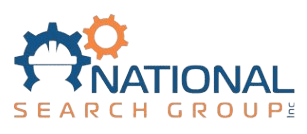Jason Dela Luna
Did you know that 83% of business leaders believe an effective recruitment process is the key to their company’s success? In today’s fiercely competitive job market, the quest to find the ideal talent for your organization can be a daunting challenge.
The right hiring process is not just a good practice; it’s a cornerstone of success and growth for your company.
The journey of recruitment is laden with challenges. From sifting through countless resumes to identifying the right talent and minimizing the time and costs associated with hiring, it’s a complex puzzle that HR professionals and business owners must solve.
This is your comprehensive guide to mastering the step by step recruitment process. We’ll take you through each step, offering insights and strategies to create a seamless and efficient hiring process. Whether you’re an HR professional, a business owner, or someone interested in the world of HR, this guide will provide valuable information to help you build the perfect recruitment process.
Understanding the Recruitment Process

The recruitment process is a multifaceted journey encompassing various crucial stages from identifying talent to attracting, and selecting qualified individuals to fulfill job openings within an organization. A clear understanding of each of these stages is pivotal, serving as the foundation for streamlining the process and ensuring successful outcomes.
At its core, recruitment stands as one of the most fundamental functions within HR. It is the process of finding, engaging, and securing top talent to join an organization’s ranks.
The hiring process unfolds through a series of well-defined steps, each playing an indispensable role in the pursuit of the ideal candidate. The steps in recruitment include identifying hiring needs, attracting top talent, screening and shortlisting, conducting interviews, selecting the right fit, making a job offer, and seamlessly onboarding the newly recruited employee.
The significance of recruitment extends beyond mere transactions; it’s about securing the future of an organization. This is why recruitment teams often vary in size, depending on the scale and complexity of the organization’s hiring needs. In smaller companies, a single HR professional might manage the process, while larger enterprises could have entire teams dedicated to talent acquisition.
In the contemporary landscape, technology plays a pivotal role in the recruitment process. Recruitment software, including applicant tracking systems, has revolutionized the way organizations manage candidates, streamline communications, and track the progress of job openings. This technological advancement ensures a more efficient and organized approach to recruitment.
In the forthcoming sections of this blog, we’ll delve deeper into each step of the recruitment process, offering comprehensive insights and strategies to help you navigate the intricate terrain of recruitment. We will equip you with the knowledge and tools to create an effective and efficient recruitment process.
What Goes into a Perfect Process of Recruitment
A truly perfect recruitment process is more than just a series of steps; it’s a well-orchestrated journey that encompasses careful planning, effective communication, and thorough evaluation. This journey begins with the critical first step of identifying your organization’s hiring needs and culminates with the successful onboarding of a new employee. Let’s delve into the 8 stages of hiring process to gain a deeper understanding.
Identifying Hiring Needs

The foundation of a perfect recruitment process is laid by identifying your organization’s hiring needs. This involves a thorough analysis of your current workforce, an assessment of skill gaps, and the determination of specific roles and responsibilities required to meet your organizational objectives. Conducting a comprehensive job analysis provides clarity on the qualifications, experience, and competencies necessary for each position.
Moreover, it’s essential to align these hiring needs with your organization’s long-term goals. Are you seeking individuals who can contribute to your company’s growth and development, or do you require specialized skills for a particular project? Clearly defining your hiring needs is the cornerstone of attracting the right candidates.
Developing a Recruitment Strategy
Once the hiring needs are crystal clear, the next pivotal step is to craft a well-thought-out recruitment strategy. This strategy is instrumental in determining the most effective channels to reach potential candidates. From leveraging job boards, social media platforms, and professional networks to considering employee referrals, these channels ensure a diverse pool of applicants.
Prepare a Clear and Concise Job Description

An engaging job description is equally vital. The critical elements of a job description, including job title, duties, qualifications, location, and compensation, are vital components. It also emphasize the benefits of joining your organization.
Utilizing best practices in creating job descriptions is also important. Crafting an enticing job description not only attracts qualified candidates but also provides insights into what your organization can offer.
Furthermore, it’s imperative to establish a timeline for the recruitment process. Set deadlines for application submissions, interview rounds, and final decision-making. A well-defined recruitment strategy streamlines the entire process and ensures that you don’t miss out on top talent.
Conduct a Talent Search
With your hiring needs clearly defined and a comprehensive job description in hand, it’s time to embark on a talent search. This phase involves tapping into various channels to discover potential candidates.
Leveraging sources such as job boards, social media platforms, and professional networking sites allows you to reach a wider and more diverse pool of talent.
Screen and Shortlist Candidates

With a pool of applications at your disposal, it’s time to move on to the screening and interviewing stage. The screening and shortlisting phase plays a pivotal role in narrowing down the candidate pool to the best-suited individuals.
By systematically screening applications based on qualifications, experience, and alignment with your organization’s values and culture, you ensure that only the most suitable candidates progress to the next level.
Leveraging applicant tracking systems streamlines the screening process and identifies the most qualified candidates.
Conduct Interviews
Following the initial screening, conducting interviews allows you to delve deeper into assessing the candidates’ skills, experience, and cultural fit. Interviews are the heart of the recruitment process, providing the opportunity to interact with candidates and assess their suitability. From telephonic screenings and video interviews to face-to-face meetings and psychometric testing, this phase covers various facets of evaluation.
Creating effective interview questions and conducting interviews is key to gathering comprehensive insights into a candidate’s abilities and suitability for the role.
Evaluating and Selecting
After the interviews, it’s time to meticulously evaluate the candidates and make your final selection. This stage involves assessing each candidate’s qualifications, experience, interview performance, and references. Technical skills are important, but it’s equally crucial to consider soft skills such as communication, teamwork, and adaptability.
Conducting background checks and verifying references further provides valuable insights into a candidate’s work history and reputation. These steps are critical to making an informed decision and reducing the risk of hiring someone who might not be the right fit for your organization.
Structured approaches to making a job offer, including presenting employment contract details, are integral to this phase.
Onboard Your new Employee
Once the chosen candidate accepts the job offer, it’s time to transition them smoothly into their new role. Employee onboarding is a significant phase, facilitating their integration into your organization. This crucial phase involves extending a warm welcome to the new employee, providing them with the necessary resources and information, and seamlessly integrating them into your team.
During onboarding, you can introduce the new employee to their colleagues, assign them a mentor or buddy, and provide them with an overview of your organization’s culture, values, and goals. This ensures that they feel supported and connected from day one.
Moreover, providing necessary training or orientation, including technical training, familiarity with company policies and procedures, and guidance on navigating internal systems and tools, empowers the new employee to perform their job effectively.
The collective journey through these seven phases ensures that you attract, select, and onboard the most suitable candidates for your organization’s success.
Factors That Influence Recruitment
Recruitment is a dynamic process influenced by an interplay of internal and external factors. These elements play a crucial role in shaping the strategies and outcomes of your recruitment efforts.
Internal Factors
Organizational Size:
The size of your organization can significantly impact recruitment. Smaller companies often have a more direct and personal approach to hiring, while larger corporations may rely on formalized processes due to the volume of positions they need to fill.
Salary Structure:
Competitive and fair compensation is a magnet for top talent. A well-structured salary offering can be a key internal factor that attracts the right candidates.
Work Culture:
Your organization’s work culture defines how employees collaborate and interact. A positive work culture can be a strong selling point for recruitment.
Growth Rate:
A company’s growth rate can affect recruitment by indicating future opportunities for advancement and development. High-growth companies often attract individuals seeking career progression.
External Factors
Economic Conditions:
The economic environment, whether booming or in a downturn, can significantly affect recruitment. In economic upswings, competition for talent can be fierce, while during downturns, there may be more candidates but also financial constraints
Market Trends:
Staying attuned to industry trends is vital. Understanding market dynamics can guide your recruitment strategy to ensure it aligns with evolving job market demands.
Availability of Talent:
Local and global factors determine the availability of talent. Factors like the presence of universities, relocation incentives, and remote work trends can influence the candidate pool.
Incorporating an awareness of these internal and external factors into your recruitment strategy is essential. Understanding how they impact the process can help you attract the right candidates effectively.
Benefits of a Strong Recruitment Process for the Organization
A robust and efficient recruitment process delivers a wide array of benefits to your organization, contributing to overall business success.
Access to a Diverse Pool of Qualified Candidates:
A well-planned recruitment process expands your candidate pool, ensuring you have access to individuals with diverse skills and experiences.
Increased Employee Retention:
When you hire candidates who are a great fit for your organization, they are more likely to stay, reducing turnover rates.
Enhanced Employer Brand and Reputation:
A strong recruitment process can enhance your organization’s image, making it an attractive place to work. This, in turn, can boost your reputation as an employer of choice.
Improved Team Performance and Productivity:
Hiring the right candidates leads to higher team performance and productivity, as they are more likely to have the necessary skills and cultural fit.
Reduced Hiring Time and Costs:
Efficient recruitment processes save time and resources, reducing the overall cost of recruitment.
Minimized Legal and Compliance Risks:
Ensuring that your recruitment processes adhere to legal and compliance standards mitigates potential risks.
In conclusion, an efficient recruitment process is an investment in your organization’s future success. By attracting, selecting, and onboarding top talent effectively, you contribute to the growth and prosperity of your company.





